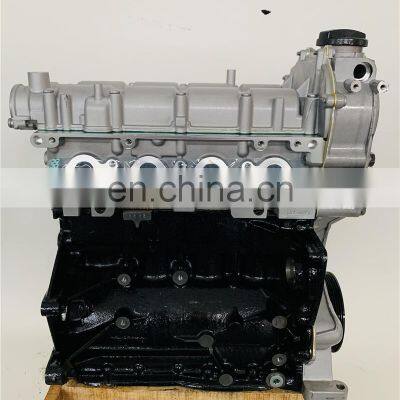Keep smooth operations with a properly serviced clp engine.
Keep smooth operations with a properly serviced clp engine.
Blog Article
Exactly How a Clp Engine Can Boost Effectiveness in Various Industries
The advent of CLP engines notes a considerable change in operational performance across numerous industries, driven by their ability to enhance gas consumption and decrease downtime. Industries such as manufacturing and logistics stand to obtain significantly from their robust style and consistent power result, which promise to enhance operations and improve productivity. As organizations significantly prioritize sustainability along with effectiveness, the duty of CLP engines ends up being much more essential. What stays to be seen is just how these developments will certainly form the future landscape of industrial procedures and their influence on broader financial trends (clp engine).
Review of CLP Engines
CLP engines, or Constant Fluid Propellant engines, represent a considerable improvement in propulsion technology, particularly for space applications. These engines utilize a continual feed system that permits the continual expulsion of propellant, bring about boosted efficiency and performance contrasted to standard solid or hybrid propulsion systems. By maintaining a constant circulation of liquid propellant, CLP engines can achieve extra exact thrust control, which is essential for maneuvering spacecraft in numerous objective scenarios.
The layout of CLP engines integrates advanced products and innovative gas administration systems. clp engine. This results in lowered weight and enhanced reliability, crucial aspects for long-duration space objectives. The continual operation lessens the risk of combustion instability, an usual difficulty in conventional rocket engines.

Benefits in Production
The production of Continual Fluid Propellant (CLP) engines offers a number of significant benefits that improve both effectiveness and cost-effectiveness. One of the key benefits is the streamlined manufacturing procedure, which minimizes the intricacy related to conventional propulsion systems. By utilizing liquid propellant, manufacturers can attain better accuracy in engine performance, resulting in optimized energy result and minimized waste.
Furthermore, CLP engines help with a greater level of modularity, permitting for much easier combination into numerous manufacturing lines. This adaptability can considerably decrease preparations and enhance total functional flexibility. Using CLP modern technology likewise tends to lessen the requirement for comprehensive upkeep because of fewer relocating components, which translates right into decreased downtime and functional costs.

Applications in Logistics
Leveraging Continual Fluid Propellant (CLP) engines in logistics uses significant advantages in operational efficiency and reliability. These engines offer a robust service for various transportation needs, enabling the seamless motion of Continued goods across vast distances. The inherent design of CLP engines permits consistent power result, which converts right into smoother and more foreseeable transport routines.
One of the essential applications of CLP engines in logistics is in heavy-duty products transportation, where they can drive both ground and airborne cars. Their capability to preserve high performance under varying lots conditions guarantees that delivery timelines are met, therefore boosting client fulfillment. In addition, CLP engines can be incorporated into automated why not try these out logistics systems, helping with real-time tracking and maximizing path planning.
In addition, the durability of CLP engines lowers maintenance downtime, allowing logistics companies to optimize their operational capabilities. This is specifically useful in warehousing operations, where efficiency in managing and carrying goods is essential. As logistics continues to develop, the integration of CLP engines stands for a forward-thinking approach that not just improves efficiency but additionally supports the market's growing needs for integrity and speed.
Effect On Energy Performance
How do Continual Liquid Propellant (CLP) engines improve power efficiency in transport? CLP engines utilize a consistent circulation of liquid fuel, enhancing burning processes and preserving a secure thrust outcome. This layout minimizes power losses connected with typical combustion engines, where fuel shipment can differ and lead to inadequacies.
The continual operation of CLP engines permits an extra reliable thermal cycle, leading to greater specific impulse compared to traditional engines. clp engine. This equates to lowered fuel consumption for the exact same quantity of job done, significantly decreasing operational prices across different transport fields, consisting of aviation and maritime sectors
Furthermore, the capacity of CLP engines to maintain optimal performance under varying load conditions decreases the requirement for regular velocity and deceleration, additionally boosting fuel efficiency. Improved energy right here performance not just adds to set you back financial savings yet additionally leads to reduce greenhouse gas emissions, straightening with global sustainability objectives.
Future Trends and Innovations
Emerging improvements in Constant Fluid Propellant (CLP) engine modern technology assurance to change the landscape of transport performance and sustainability. As sectors pivot towards greener options, CLP engines stand at the forefront, integrating cutting-edge products and style approaches that enhance performance while minimizing environmental impact.
Among one of the most appealing trends is the fostering of crossbreed systems that integrate CLP engines with renewable resource resources. This synergy can maximize fuel intake and reduce exhausts, lining up with global sustainability objectives. Advancements in computational liquid dynamics (CFD) are promoting the style of even more aerodynamically effective engines, leading to decreased drag and boosted fuel performance.
Additionally, the growth of wise surveillance systems is readied to boost operational performances. These systems take advantage of data analytics and IoT modern technology to optimize engine efficiency in real-time, ensuring that the engines operate within their most reliable specifications.
As study remains to check out different propellant formulations-- such as biofuels and artificial fuels-- the future of CLP engines looks appealing. By harnessing these advancements, sectors can not only enhance their performance but likewise add significantly to a cleaner, a lot more sustainable future in transportation.
Final Thought
Finally, CLP engines represent a considerable innovation in efficiency across several sectors. Their ability to enhance gas consumption and minimize functional prices, combined with a continuous feed system, improves power outcome and functional integrity. The assimilation of advanced materials and fewer relocating components minimizes maintenance requirements, while alignment with sustainability goals settings CLP engines as an essential modern technology for the future. Proceeded technology in this area assures further improvements in efficiency and environmental performance.
Report this page